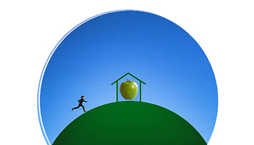The outdoor lights are blazing away trying to keep up with the bright sun shining outside of North Avenue–the Baltimore City Public Schools district office. It’s an interesting welcome to a meeting on sustainability policy.
But inside the board room, something is different. Purpose and determination. As Cheryl Casciani, a school board member pages through the draft of the sustainability policy, she is pointing out parts of the policy that staff need to revise.
“Encourage isn’t strong enough,” We need to change it to Insist.”
Peering over her glasses at school officials, Casciani moves quickly through the document to ask for stronger policies to protect children. Her points are quick, thoughtful and insistent.
“I’d like all toxics out of our schools… stop bus idling in front of schools…it’s a health issue.”
For a school district that still hasn’t implemented green cleaning as required by the state, this insistence toward progress is necessary and overdue. Plagued with poorly maintained schools and a lack of resources, change will only come when it is demanded and verified.
But how can we verify that changes in policy to improve the health and learning of students will be implemented in our schools?
Let the students do it.
Let our students use their school as a science laboratory, gathering and analyzing data on factors that affect their health and learning. Using common professional tools and protocols, our student can monitor, analyze and report on the environmental factors that affect their health and learning.
Students can use Tools for Schools by the Environmental Protection Agency (EPA) to proactively find and report issues that could trigger asthma attacks if left uncorrected. Using the Operations Report Card by the Collaboration for High Performance Schools (CHPS), students can monitor classroom ventilation, temperatures, humidity, and acoustics. Adding their school to the data base of the Energy Star Portfolio manager enables them to compare their energy use to similar schools and to calculate cost savings of energy renovations or improved operations.
As a hands-on science project investigating air quality, health, energy, engineering and technology, it aligns perfectly with Next Generation Science Standards, Common Core, Maryland Environmental Literacy requirements and STEM. This project studies the school as a system, integrating knowledge from the health professionals, facilities managers, custodians and teachers to improve the health and learning conditions at the school.
The information that students provide to the district could avoid or remedy health hazards, reduce repair costs and identify potential cost savings. In a pilot project at Baltimore Polytechnic Institute, students and faculty noticed excessive water charges over a several year period. The city water department has now credited over $447,000 back to the school district. Not bad for a one week project.
This project empowers students to use science and innovation to improve their school environment, their learning, and their lives. We owe them this chance. Let’s insist upon it.
For all of our children, thanks, Cheryl.

Leave a Reply